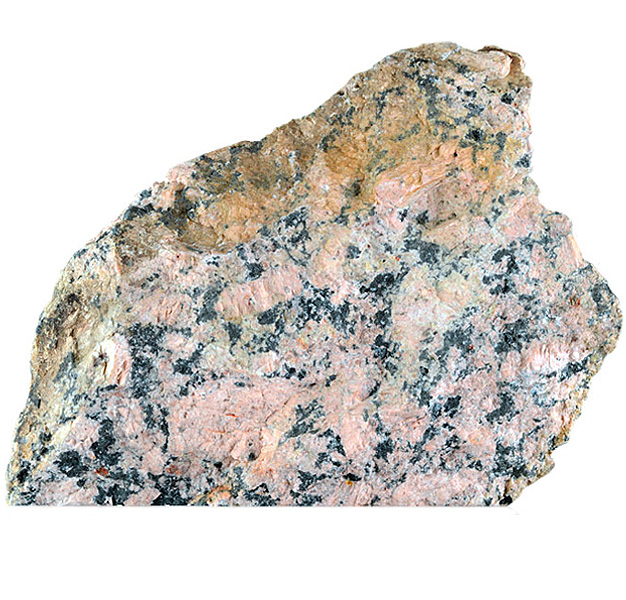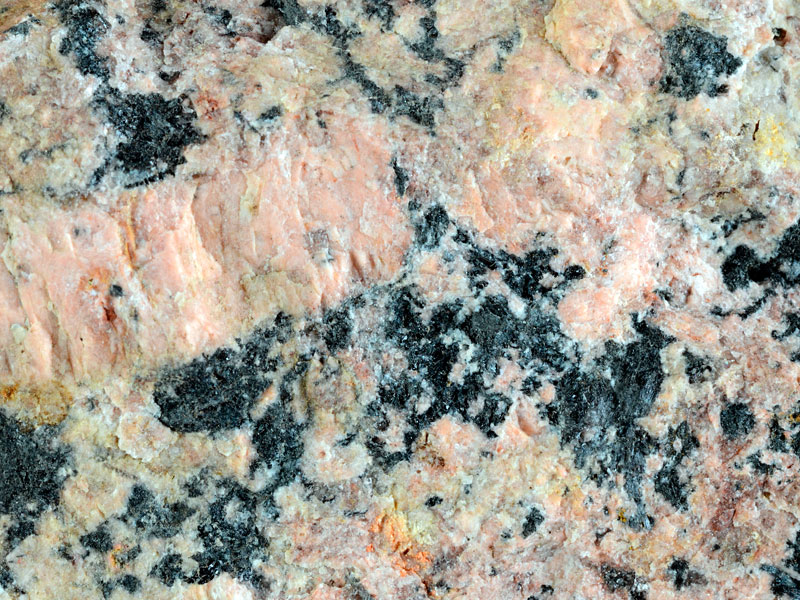
Fact sheet
Luxullianite is a rare type of tourmaline-rich granite named after the village of Luxulyan in Cornwall. Luxullianite is formed from boron-rich pegmatitic fluids concentrated during fractional crystallisation of the biotite-rich St Austell granite complex, which formed around 280 million years ago by partial melting of the lower continental crust during the Variscan orogeny. This sample comes from Conce Moor, St Austell, Cornwall.
In thin section the rock contains altered feldspar that appears cloudy and exhibits little visible twinning. Large quartz grains exhibit no alteration. Two generations of tourmaline are present in the sample: the earlier generation is formed of equidimensional patchy brown and blue grains 0.5–1 mm in diameter; the later tourmaline grains are finer grained needles most commonly associated with the quartz and sometimes radiating bundles of tourmaline needles.
The United Kingdom Virtual Microscope (UKVM) collection consists of igneous, sedimentary and metamorphic rocks from around the UK.
It is intended as a teaching resource, helping to tell the story of the common rock types and how they form, and reflecting the history of the UK at the margins of the continent of Europe. The collection is a series of teaching sets, for example igneous rocks from the North Atlantic Igneous Province and SW England; high-temperature metamorphic rocks from Scotland and low-temperature metamorphic rocks from Wales; and sedimentary rocks, including English limestones and sandstones.







